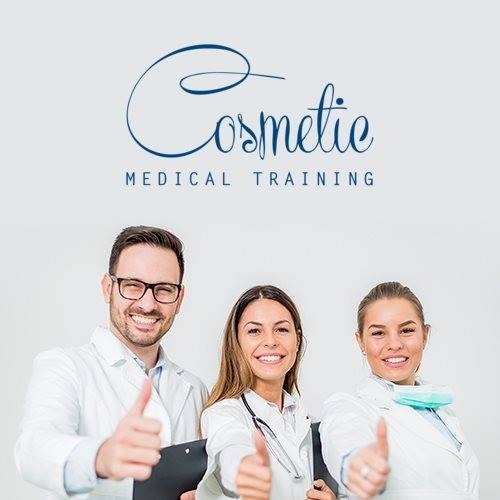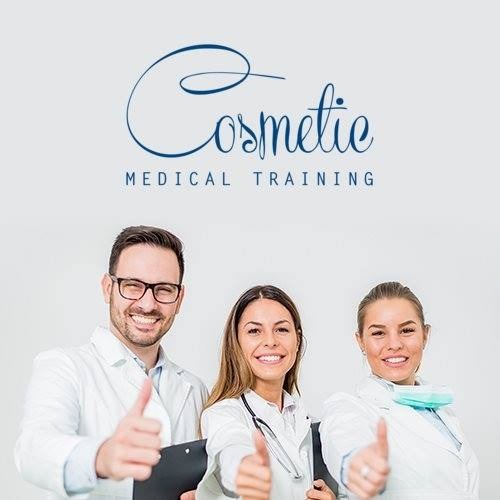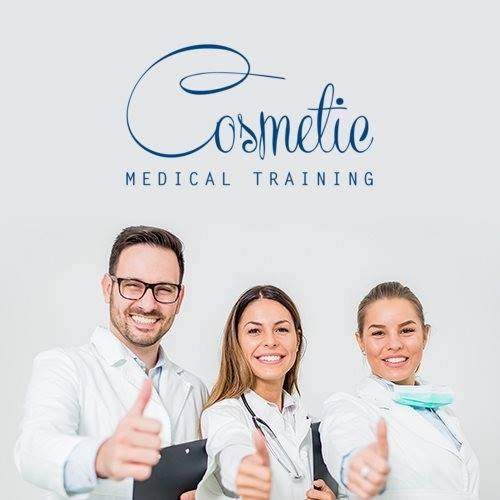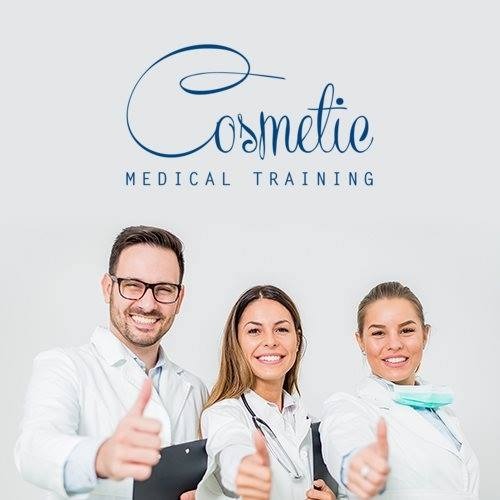
Xeomin Certification & Xeomin Training Course
- Oct 26, 2024
- | 11
Cosmetic Medical Training provides you with our FREE Xeomin Certification and Xeomin Training Manual. Please contact us for your hands-on training.
How to Inject Xeomin®: a Beginner’s Guide to Xeomin Certification
What is Xeomin®?
XEOMIN is a botulinum toxin type A produced by the bacteria Clostridium botulinum. Xeomin is a purer form of botulinum toxin as the active ingredient is isolated from proteins such as hemagglutinins. Other botulinum toxins, such as Botox Cosmetics contain accessory proteins. Xeomin comes in three dose vials: 50, 100, or 200 units per vial. Ingredients include the following: incobotulinumtoxinA, human albumin (1 mg), and sucrose (4.7 mg).
XEOMIN interferes with the acetylcholine release from the nerve endings at the neuromuscular junction. Neurotoxin binds the nerve terminal and cleaves a protein called SNAP25, which is essential for the release of acetylcholine. Over time, new nerve endings form and re-establishes nerve signal transmission.
Xeomin® was FDA-approved in 2011 “for the temporary improvement in the appearance of moderate to severe glabellar lines, or frown lines between the eyebrows, in adult patients”. Injection of Xeomin® on other areas of the face for aesthetic purposes is considered off-label use. Most patients will see the full effect on days 3 – 7 and muscle relaxation may last up to 3 – 4 months. A clinical study that tested Xeomin versus Botox in the glabellar frown lines concluded the following: IncobotulinumtoxinA demonstrated a more rapid onset and a longer duration of treatment effect than onabotulinumtoxinA (1:1 dose ratio). A different study looking at the crow’s feet using Xeomin and Botox concluded the following: IncobotulinumtoxinA and onabotulinumtoxinA (1:1 dose conversion ratio) were well tolerated, showing comparable efficacy and duration of treatment effect for crow’s feet. An additional study examining facial dystonia resulted in the following: Switching from onabotulinumtoxinA to incobotulinumtoxinA did not result in an inferior outcome for the treatment of facial dystonia and led to a cost-saving for the department. However, the package insert for Xeomin indicates that its units are not “interchangeable” with other botulinum toxin products in the market.
Contraindication
Xeomin is contraindicated in the following patients:
- Known hypersensitivity to botulinum toxin or other components in the formulation.
- Infection at the site of injection
Xeomin cautions injector by stating that post-marketing safety data suggest spread of botulinum toxin beyond the site of local injection. Various symptoms such as asthenia, generalized muscle weakness, diplopia, blurred vision, ptosis, dysphagia, dysphonia, dysarthria, urinary incontinence, and breathing difficulties have been observed from hours to weeks following the injection. There have been reports of death related to the spread of botulinum toxin from swallowing or breathing difficulties. Patients must be warned to seek immediate medical attention if swallowing, speech, or respiratory disorders occur. Patients have required either feeding tubes or intubation in severe cases. Patients with peripheral motor neuropathy diseases, amyotrophic lateral sclerosis, or neuromuscular junctional disorders (e.g., myasthenia gravis or Lambert-Eaton syndrome) are at increased risk and should be avoided.
Hypersensitivity reactions such as anaphylaxis, serum sickness, urticaria, soft-tissue edema, and dyspnea have been reported. If a patient experiences any of the symptoms, then immediate medical attention is required. Any hypersensitivity to neurotoxin, human albumin, or sucrose can lead to life threatening anaphylaxis.
Corneal exposure, ulceration, or ectropion has been reported. The loss of orbicularis muscle can lead to complications. It is not recommended to inject Xeomin into the medial lower eyelid area. Due to the risk of ecchymosis in the soft tissue of the eyelid, it is recommended that gentle pressure is applied.
To diminish the risk of ptosis, you should avoid injection near the levator palpebrae and that corrugator injection are placed at least 1cm above the bony ridge.
Xeomin also contains albumin, which is a derivative of human blood. Therefore, there is a theoretical risk of viral diseases, CJD, or vCJD, although none has ever been reported.
Clinical trials
Two clinical studies (Studies GL-1and GL-2) enrolled 547 healthy patients (≥18 years old) with glabellar lines of at least moderate severity at maximum frown. The study subjects received 20 units of Xeomin and followed up for 120 days. Data on day 30 shows that 60% to 48% rated at least 2 grades improvement from baseline.
Reconstitution and Handling
The package insert recommends that sterile, preservative-free 0.9% Sodium Chloride Injection is used for reconstitution. Draw up with a 20-27 gauge needle. Using alcohol, clean the rubber stopper of the vial. Insert the needle vertically through the rubber stopper and the vacuum will automatically draw in the saline in the syringe into the vial. After you remove the needle, mix Xeomin carefully by swirling and inverting the vial. It is not recommended to shake vigorously. The package insert recommends that Xeomin should be used for only one injection session for only one patient. Also that it should be used within 24 hours after dilution. After dilution, it should be stored in a refrigerator at 2°C -8°C (36°F -46°F).
It should be noted that Preserved (Bacteriostatic) 0.9% Sodium Chloride will increase the activity of the Xeomin® protein for up to 6 weeks when stored at 4°C (As recommended by Consensus Recommendations on the Use of Botulinum Toxin Type A in Facial Aesthetics). Also, the general practice consensus is that Xeomin is used as a multiple-dose vial for more than one patient.
Additional dilution options will be discussed during your hands-on Xeomin certification and Xeomin Training class.
Patient Consultation
All patients must receive a thorough consultation about her/his problem prior to any injections. You must get a complete past medical history including any history related to the use of botulinum toxin. Information regarding previous use, last injection, and complications must be assessed. You need to manage your patient’s expectations and talk about their current status with empathy and honesty. Discuss with your patient any asymmetry and discuss the limitations of the treatment. Your patient should sign all the necessary forms like informed consent. You must also document a photo of your patient to record a “before” picture in case there are any complications.
Glabella (Frown Lines) Xeomin Certification
Muscles Involved
The procerus and corrugator muscles comprise the two main muscle groups in the glabellar area. The procerus originates from the nasal bone and attaches to the medial forehead and skin of the brow. Procerus muscle moves the medial brow down inferiorly. The corrugator originates from the medial superciliary arch and inserts into the skin of the medial forehead. The corrugator moves the brow medially and inferiorly.
Injection Technique
Aim your needle perpendicular to the skin. At the 90 degrees angle, insert the needle deep into the subcutaneous space near the periosteum. Since the frontalis muscle lies superficial to the glabellar muscles, the injection must be deep intramuscular. A superficial injection can cause the eyebrows to feel heavy on your patient. However, an injection that is too deep will dull the needle if you hit the skull.
Landmarks:
Medial corrugator injection = 1 cm above the bony orbital rim and vertical to the medial canthus
Lateral corrugator injections = 1 cm above the bony orbital rim and around 0.5cm medial to the vertical mid-pupillary line
Procerus injection = immediately above the crossing point of the X formed by drawing a line from the medial eyebrow to the contralateral medial canthus.
20 units are the standard FDA approved injection for the Glabellar lines as found in the Xeomin® package insert.
Please note that patients with strong glabellar muscles may require 1-2 additional units per injection site. Additional clinical pearls will be discussed during your hands-on Xeomin certification and Xeomin Training class.
Complication
According to Xeomin®, adverse reaction included the following:
- Headache 6%
- Brow ptosis 0.7%
- Hematoma 0.6%
- Pain 0.2%
- Eyelid edema 0.4%
- Blepharospasm 0.2%
- Eye disorder 0.2%
- Eyelid ptosis 0.2%
Lid ptosis is a cosmetically dangerous complication. An injection that is lateral to the mid-pupillary line may cause the botulinum toxin to spread to the levator palpebrae. An injection near the orbital rim may also cause this complication. Lid ptosis can be seen 2 to 7 days after the initial injection. The effects may last up to 4 – 8 weeks. When this complication occurs, Iopidine 0.5% drop, one drop to affected eye TID may be prescribed to minimize the ptosis.
Frontalis (Horizontal Forehead Lines) Xeomin Training
Muscle involved
The frontalis muscle is a common muscle that beginners have difficulty injecting properly. The size and shape vary from v-shaped or rectangle-shaped, short or tall, and narrow or broad. Relying solely on the wrinkle pattern on the skin will cause you to miss the muscle if you don’t use your fingers to palpate the borders of the muscle.
The frontalis muscle originates at the galea aponeurosis and inserts into the muscles of the glabellar complex. The frontalis lifts the eyebrows superiorly and moves the scalp anteriorly. While the wrinkles are horizontal, the muscle fibers run vertically.
Injection Technique
When injecting the frontalis, you can angle your needle at a shallow angle like a subcutaneous injection. This is due to the fact that the skin is typically thin and there are no other major structures or muscle groups that overlap in the forehead. Place your injections at least 2 cm apart. You may see a small wheel form under the skin. The lower 3 – 4 cm of the forehead should be avoided to prevent brow ptosis. In some patients with v-shaped frontalis, there are no muscle fibers in the middle, and injection here will yield no benefits.
Allergan states in their package insert that 4 units should be injected in 5 injection spots. An article from 2004 titled “Consensus recommendations on the use of botulinum toxin type A in facial aesthetics” recommends that we start with a lower dose of Botox®: 2 units per injection site. Many injectors will avoid injecting too much botulinum toxin here to avoid a frozen forehead or brow ptosis.
Complication
According to Allergan, Botox® was used on 665 patients and the complication rates are as follows:
- Headache (9%)
- Eyelid ptosis (2%)
- Brow ptosis (2%)
- Skin tightness (2%)
Brow ptosis typically occurs due to over injection of the frontalis. An injection that is too low can also cause this. Some patients who do not want the glabellar injection with the frontalis will experience this as well. Finally, a hyperfunctional frontalis muscle, that contracts whenever the person opens their eyes, will experience heaviness due to the inability to move the frontalis.
A Spock brow or Mephisto sign is caused by inadequate injections along the lateral fibers of the frontalis muscle. In treating the touch-up, inject 1 -2 units into the strongest portion of the muscle fiber.
Orbicularis Oculi (Crow’s Feet) Xeomin Certification
Muscles Involved
The orbicularis oculi is a single circumferential muscle that outlines the orbit. It originates from the medial palpebral ligament and inserts into the lateral palpebral raphe, corrugator, frontalis, and depressor supercili. The orbicularis oculi pull the skin of the forehead, temple, and cheek towards the medial angle of the orbit.
Injection Technique
Similar to the frontalis injection, the needle can be inserted at a low angle like a subcutaneous injection. However, it is still an intramuscular injection as you need to affect the muscle to have an effect. Inject 1 cm outside of the orbital rim to avoid injecting the ocular muscles. Place at least 3 injections at least 2 cm apart in a triangular shape.
Allergan states in their package insert that 4 units should be injected in 6 injection spots. An article from 2004 titled “Consensus recommendations on the use of botulinum toxin type a in facial aesthetics” recommends that we start with a lower dose of Botox®: 3 units per injection site.
Complication
According to Allergan, Botox® was used on 526 patients and the complication rates are as follows:
- Eyelid edema (1%)
Rare side effects, such as asymmetrical smile or diplopia, are caused by migration. All injections should be high above the zygomatic arch.
Xeomin Certification & Xeomin Training Course
For more information contact us at email@CosmeticMedicalTraining.com or call us at (212)470-8059
Statement of Responsibility
Cosmetic Medical Training recognizes that many of the techniques and recommendations are for procedures that are considered off-label use. Our recommendations are based on many textbooks, published articles, seminars, and practical knowledge and experience. The authors have attempted to maintain up to date knowledge and information in this training manual with the current standard of care. However, due to the continuing flow of new research and information relating to the drugs being used in this course, we recommend that you check with the manufacturer for any changes in the package inserts, warnings, and precautions. All information and tools presented within this site are intended for educational purposes. We do not guarantee that the information will be completely accurate and up to date; therefore the authors will not be held responsible for any errors, omissions, or inaccuracies published. Application of the knowledge is ultimately the responsibility of the practitioner.
The owners, authors, and any participants disclaim all liability or loss in conjunction with any content provided here. We disclaim any liability for products or services recommended including defective products or direct, indirect, special, incidental, or consequential damages, arising out of the use or the inability to use the materials/information published.
Originally published at Xeomin Training in Miami




.jpg)